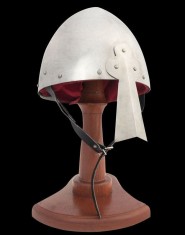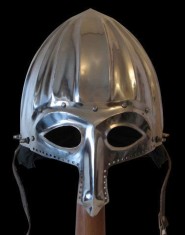About Viking, conical and Slavic helmets
Viking, conical, and Slavic helmets are combined by its general type of fairly simple but functional construction – a dome with nose guard.
Viking helmets, also often called Norman, belong to a spangenhelm type.
One iron band circles wearer’s head while other two iron bands are crossed on top of the head riveted to the first one. Unfilled quarters are protected with four metal triangle-formed pieces (hard leather or felt with tightly placed metal rivets in its early versions).
Such construction type is one of the easiest to make, it needs less work, materials, and skills to produce. We can't call Viking-age blacksmiths unprofessional, when we see jewellery they made, therefore, many historians blame bog's iron as a problem of helmets' dome creating.
Nose guards or spectacles were riveted to the main iron band around brows region. But not all Norman helms were so laconic, some were upgraded with chainmail aventails or cheek guards.
Spangenhelms came to Norman lands from Eurasian prairies and, during early Medieval Ages, it was the most commonly used helm style.
Few surviving helmets also have rivet holes that were probably used for a kind of suspension. Additionally, Normans almost certainly wore felt caps under a helmet to soften its wearing.
Anyway, iron was difficult to produce during the Viking era – it was that expensive that even gold valued less. Accordingly, helms weren’t a common item at all. They were repaired and passed from parents to children remaining sometimes in use for centuries.
Oh, and they had no horns! Those few horned helmets found are most likely ceremonial and burial ones.
Conical or nasal helmet evolved from spangenhelm replacing it to a large extent in the XI-XII centuries throughout Western Europe by the time of Norman conquest.
Particularly similar to Norman ones, they had similar construction (four metal sheets or hard leather attached to a metal framework plus a nasal) or were one-piece hammered. Therefore, they had no external framework but an additional rolls of metal on the nasal.
Unlike spangenhelm, conical one was, apparently, cone-shaped and could be crafted of a single iron sheet.
Its main characteristic – a nose-guard or "nasal" – protective strip of metal extended down from skull or browband over wearer’s nose.
As its ancestor, nasal helm could have a chainmail aventail or cheek guards.
Slavic helmets were very popular not only with the Slavic tribes but all over Kyivan Rus, among Varangian and Khazars.
Slavic helms' sphero-conical shape is an evidence of their clearly Eastern, however, not mongol origin. Moreover, after the Mongol invasions, they gradually disappeared.
This helms' type interesting feature was practically mandatory mount for the plume or sultan on top. Some were crowned with sharp peaks or "çiçak" – cones.
Chainmail aventail was often attached to helmet's bottom edge.
So if you need Viking, conical, or Slavic helm, Steel Mastery’s experienced blacksmiths are ready to forge one for you. Just place an order on our website using a convenient system of options and any of these cool helmets will be yours. If you want a custom model, write to us via [email protected], and we’ll create it for you.
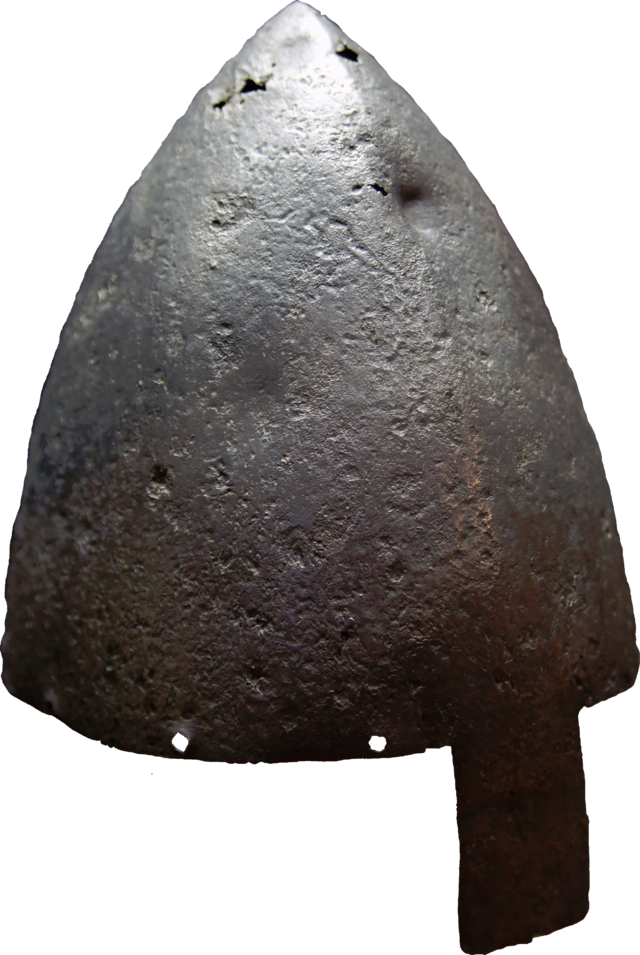
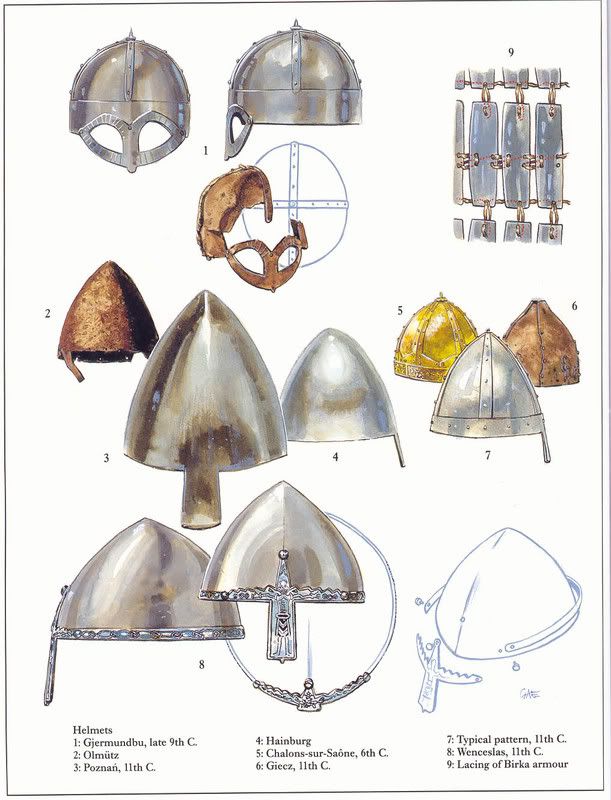
Slavic and eastern helmets:
1 - Gradsko; 2 - Moravia; 3 - Olomouc; 4 - Black grave; 5 - Dnieper valley; 6 - Gnezdovo; 7 - Tagancha; 8 - Kuban region; 9 - Birch bark (Kovaly); 10 - Guiche in Poznan; 11 - a collection of the Jagiellonian University; 12 - the village of Tiflis in the Kuban.
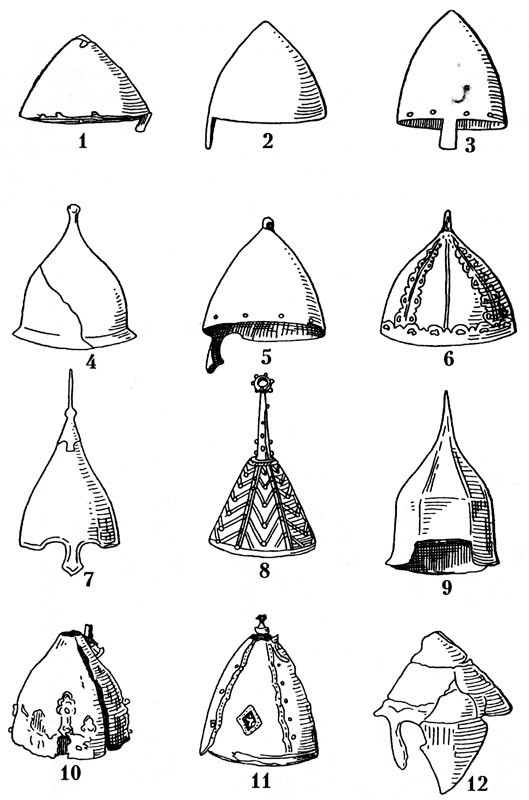

,_XIII_century-0-1-0-1-1-300x400.jpg?v=1746523880)










